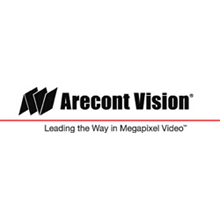 |
| 70 Arecont Vision AV2105 Ip based cameras were used for the city surveillance project |
Customer
The city of Ulju-gun, Ulsan, South Korea, with its population of nearly 200,000 citizens, desired a new video surveillance system that was exceptional in capturing clear images of the numbers and letters on license plates. Vehicles are commonly used by people committing crimes and the government sought a system that could recognise a license plate number and lead to an arrest. Ulju-gun administrators incorporated opinions from the police department and other local organisations in implementing the new system.
Challenege
License Plate Recognition (LPR) is a useful capability of video surveillance systems, and reseller Viewrun Co. Ltd. in South Korea sought to use LPR for the Ulju-gun surveillance project. In its most basic terms, LPR consists of license plate recognition software that interfaces with video management system (VMS) software and IP-based surveillance cameras positioned to view license plates. The LPR software “reads” a license plate and is able to convert the image to text.
License plate recognition systems typically use one camera per lane to view license plates on passing vehicles. The installing dealer for the Ulju-gun surveillance project, Daesung Net Co., Ltd., was looking to reduce costs without compromising system performance. The systems integrator also wanted superior image quality, high resolution, acceptable video in minimum illumination situations and easy installation.
Megapixel Solution
Viewrun recommended the use of 70 Arecont Vision AV2105 IP-based 2 megapixel cameras integrated with Luxriot software to provide display and search features for the project. The 2 megapixel resolution of the Arecont Vision camera enables one camera to view two lanes rather than requiring a camera for each lane. This one simple change provided a 60 percent cost savings without compromising the system's ability to read license plates.
Arecont Vision model AV2105 is a 2 megapixel H.264 IP camera that provides video at 24 frames per second (fps). The camera uses H.264 compression to minimise bandwidth and storage needs. Features include forensic zooming to zero-in and view the details in real time or in a recorded image, motion detection and image cropping. The camera’s day/night version includes a motorised infrared (IR) cut filter for clear black and white images in low light conditions. The AV2105 also incorporates Arecont Vision’s MegaVideo image processing that can output multiple streams, allowing the simultaneous viewing of the full-resolution field-of-view and regions of interest for high-definition forensic zooming. The camera's H.264 compression standard and superior low-light performance made it a natural choice for the project.
Megapixel Benefits
The benefit of using Arecont Vision megapixel video cameras with LPR is the increased resolution and wider coverage. There is an obvious improvement in performance over analogue or IP VGA cameras, and the higher resolution allows the use of fewer cameras, which results in additional savings.
The picture quality and digital zoom capabilities of Arecont Vision cameras far exceed analog technology. An attribute of the Arecont Vision camera line is the ability to capture detailed video from larger areas. Combined with recent cost reductions in NVR storage and network switches, the use of fewer cameras provides high-quality video at minimum cost.
Megapixel imaging represents a significant upgrade in system functionality compared to standard-resolution cameras. In addition to lower bandwidth and storage requirements made possible by H.264 compression, use of megapixel cameras dramatically decreases costs related to other elements of a system, such as fewer software licenses, fewer lenses and a decrease in man-hours needed to install and manage the system. Using fewer cameras in the Ulju city surveillance project demonstrates that potential for cost savings.


















